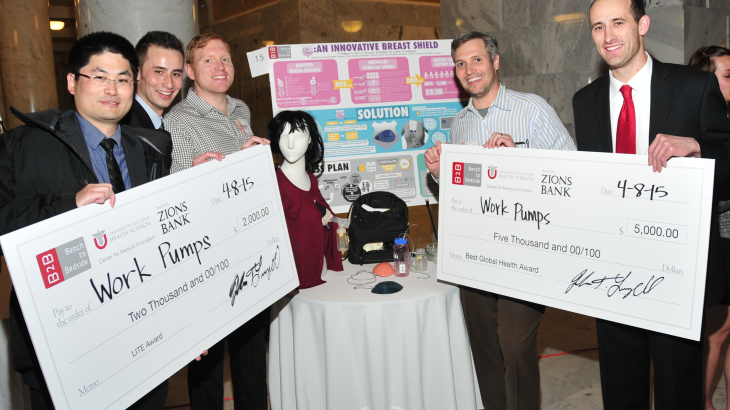Could new technology that improves how health care is delivered be unveiled Monday night? Thirty-three teams of University of Utah students hope so. After six months of research, collaboration and aha moments, the students will showcase their inventions, including medical devices, web apps and games, at the sixth annual Bench-to-Bedside competition on April 4, 6-9 p.m. at the Utah State Capitol Rotunda.
Teams will compete for more than $70,000, including a $15,000 grand prize. The awards ceremony is set for 8-9 p.m.
“There’s nothing like pitching something you’ve created to experts in the field,” said bioengineering student Ben Fogg, student director of Bench-to-Bedside and a member of Fin Blade, a team developing a new way to perform minimally invasive carpal tunnel surgery.
The Bench-to-Bedside program is designed to introduce medical, engineering and business students to the world of medical device innovation. Student teams form interdisciplinary “start-up” companies and are given the task of identifying an unmet clinical need. Projects are judged on business strategy, design quality and health care impact.
“Each year, I marvel at what our students are able to create,” said John Langell, M.D., Ph.D., M.B.A., M.P.H., executive director of the University of Utah Center for Medical Innovation. “Our students are capable of transforming science and medicine in ways we never thought possible. In only a few years, this competition has received national attention and has helped hundreds of students to develop skills to be successful in their careers.”
Medical student Jacob Whittle, co-president of Bench-to-Bedside, has relished the opportunity to receive instant feedback from clinicians about his team’s project, a longer-lasting hip implant.
“I love jumping in and trying to think of novel ways to solve the problem at hand,” Whittle said. “We just formed an LLC called Barolock, and we’re really hoping to take it to the next level. The market for hip implants is growing. We are living longer, and we need hips to last longer.”
Teams have six months and a $500 development fund to create their concepts. Students evaluate the intellectual property landscape, make a prototype for their product and construct a business plan. Teams have the opportunity to connect with more than 100 University of Utah physicians and other business people from a broad area of specialties to serve as their consultants and stakeholders.
Last year, Cinluma took home the grand prize for creating a heated, portable probe intended to destroy cervical lesions before they become cancerous.



